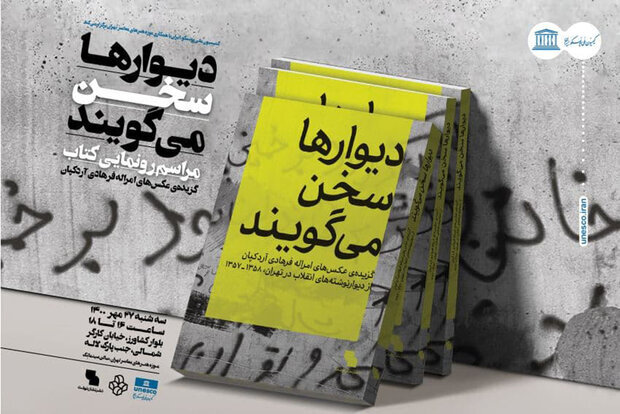“Walls Talking” on political currents behind Iranian revolution graffiti published

TEHRAN – A book containing pictures of graffiti created by various political groups during the 1979 Iranian revolution has recently come to Iranian bookstores.
Taken by veteran photographer Amrollah Farhadi, each one of the pictures has its own special story written by graphic designer Majid Abbasi.
The book entitled “Walls Talking” has been published in collaboration with the Iranian National Commission for UNESCO.
In the introduction to the book, Farhadi wrote, “The start of the project ‘Revolution Graffiti’ was at that time when mass demonstrations were being organized sporadically in every corner of the city, and people wrote mottos on walls away from the eyes of the security forces.”
Farhadi wrote his thesis on the revolution graffiti following the victory of the revolution.
The book was introduced at the Tehran Museum of Contemporary Art on Tuesday evening during a ceremony attended by Farhadi, Abbasi, Iranian National Commission for UNESCO director Hojjatollah Ayyubi, and a group of cultural figures.
Speaking at the ceremony, Ayyubi announced his organization’s plan to translate the book for an international audience.
“From an esthetic point of view, the book has many things to offer, but for me, as a political sociologist and as one who looks at it through the eyes of Max Weber, the topic of the book is different,” he said.
“Based on Weber’s view, we should learn how those who revolted thought, and this book takes us into the people’s minds. It is a study of the political currents existing at that time and in which people moved in order to pursue their own dreams,” he added.
Yunes Shokrkhah, a professor of communication science who has also written a preface to the book, attended the ceremony.
In his short speech, he said that the book would certainly have great appeal for international audiences.
“I think that what the pictures and Farhadi do in the book is a kind of deciphering. All of us have seen the writings on the walls before, but this book presents them as a collection of sociological, cultural and artistic documents,” he said.
The ceremony wrapped up with a speech by Farhadi in which he expressed his thanks to his family and those people who helped him to publish the book.
“The support showed that this book is valuable and can be of importance for future generations,” he said in conclusion.
Photo: A poster for a ceremony organized at the Tehran Museum of Contemporary Art on October 19, 2021 to introduce the book “Walls Talking”.
MMS/YAW

Leave a Comment